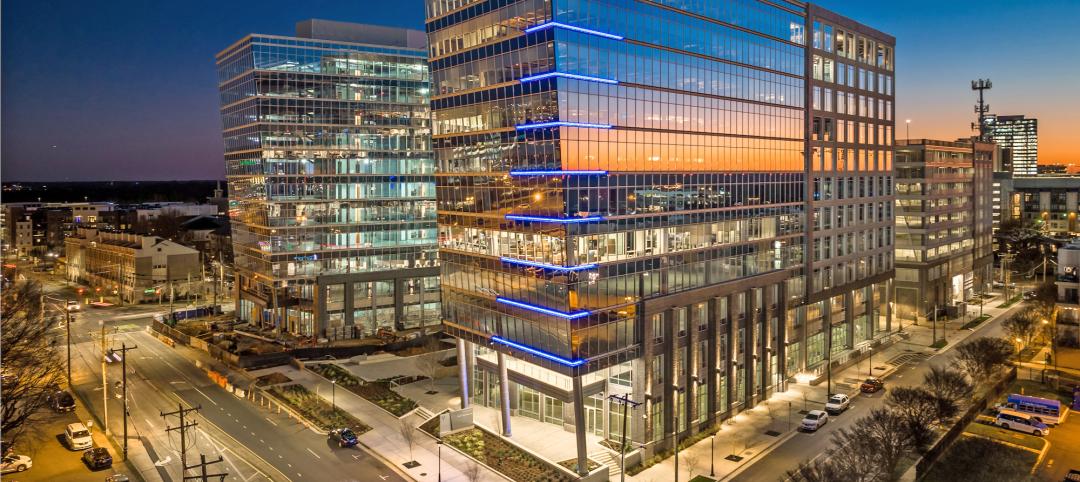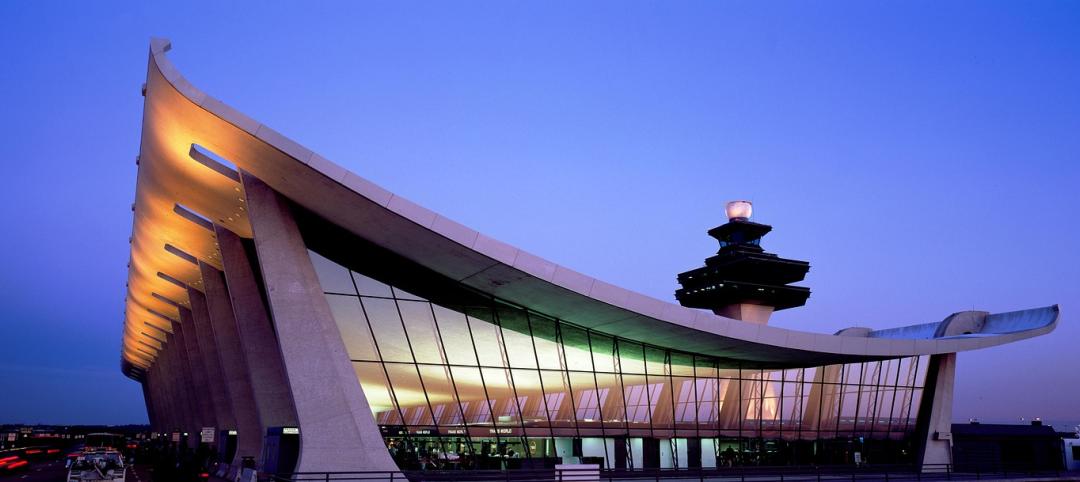Commercial construction is in high demand across the country and contractors remain optimistic about the current and forward-looking health of the sector, according to the Q3 USG Corporation + U.S. Chamber of Commerce Commercial Construction Index (‘Index’), released today. Nearly all contractors surveyed this summer (95%) expect revenues to grow or remain stable over the next 12 months compared to the prior 12 months, nearly the same percentage as in the Q2 2017 survey. Most contractors (93%) also expect to see profit margins stay the same or increase in the next 12 months, reflecting healthy contractor sentiment.
Despite contractors’ expectations for growth, access to talent continues to pose challenges in the third quarter of 2017, with 60% of contractors having difficulty finding skilled workers, compared to 61% in Q2. Nearly all contractors (91%) said they are at least moderately concerned about the skill level of the workforce, with 66% of contractors in the South expressing concerns about the availability of skilled labor. The Index release comes on the heels of Hurricanes Harvey and Irma, which are expected to exacerbate existing concerns about labor shortages in the South.
“The Commercial Construction Index is unique in providing the contractor’s view of the state of the industry, which is a key driver of the U.S. economy,” said Jennifer Scanlon, President and Chief Executive Officer of USG Corporation. “This quarter’s findings reveal strong optimism about future prospects for the industry, and also highlight a real need to address ongoing concerns about skilled labor shortages and the impact it has on building in the U.S.”
The Index looks at the results of three leading indicators to gauge confidence in the commercial construction industry – backlog levels, new business opportunities and revenue forecasts – generating a composite index on a scale of 0 to 100 that serves as an indicator of health for the contractor segment on a quarterly basis. The Q3 2017 composite index score was 73, down slightly from the second quarter’s 76, but close to the first quarter’s 74, representing a consistent sentiment of health in the sector.
The Q3 results from the three key drivers were:
- Backlog: On average, contractors currently hold 9.5 months of backlog, close to their average ideal amount of 12 months, indicating a steady market and healthy amount of booked work. This represents 77% of their ideal backlog levels.
- New Business: More than half of contractors (54%) reported high confidence in new business over the next 12 months (compared to 59% in Q2).
- Revenues: The majority of contractors (67%) continue to expect revenues to grow or remain stable in the next year, although expectations for the rate of expected growth inched toward more modest levels (compared to 71% in Q2).
“The commercial construction industry employs millions of Americans and the contributions the sector makes to the U.S. economy are vital to our country’s growth,” said Thomas J. Donohue, President and CEO of the U.S. Chamber. “However, finding skilled workers remains a challenge for this industry, and it’s likely to remain a challenge in the areas affected by the recent hurricanes. Finding skilled construction workers will be essential to ensure the Gulf region is able to quickly and efficiently rebuild. Our nation must address our workforce challenges to enable the economy to grow.”
This quarter, contractors surveyed were also asked about workforce skills development after revealing insights last quarter about the increasing difficulty in finding skilled workers. Respondents identified safety, technical proficiency, and communication as the most valued skills on the jobsite. Of note, there is a wide gap (40%) in the number of contractors who note the importance of communication skills and those who think their workers have strong skills in that area.
Just over half (53%) of contractors surveyed in Q3 said they plan to hire new workers, a decrease from 66% in Q2. This is accompanied by a 10% increase over last quarter in the number of contractors that plan to keep the same number of workers, indicating an anticipated shift from hiring staff to maintaining staff levels in the upcoming fall and winter months. Looking forward, only 39% of those surveyed in the third quarter predicted the situation will worsen, down from nearly a half (47%) in Q2, indicating that although there are shifts in the hiring environment, contractors believe it to be stabilizing. This situation bears monitoring in the coming months as parts of the Southern United States begin rebuilding from Hurricanes Harvey and Irma.
Related Stories
Retail Centers | Nov 29, 2022
'Social' tenants play a vital role in the health of the retail center market
After a long Covid-induced period when the public avoided large gatherings, owners of malls and retail lifestyle centers are increasingly focused on attracting tenants that provide opportunities for socialization. Pent-up demand for experiences involving gatherings of people is fueling renovations and redesigns of large retail developments.
Giants 400 | Nov 28, 2022
Top 130 Office Sector Contractors and CM Firms for 2022
Turner Construction, STO Building Group, Gilbane, and CBRE top the ranking of the nation's largest office sector contractors and construction management (CM) firms for 2022, as reported in Building Design+Construction's 2022 Giants 400 Report.
Legislation | Nov 23, 2022
7 ways the Inflation Reduction Act will impact the building sector
HOK’s Anica Landreneau and Stephanie Miller and Smart Surfaces Coalition’s Greg Kats reveal multiple ways the IRA will benefit the built environment.
Multifamily Housing | Nov 22, 2022
10 compelling multifamily developments debut in 2022
A smart home tech-focused apartment complex in North Phoenix, Ariz., and a factory conversion to lofts in St. Louis highlight the notable multifamily developments to debut recently.
Industrial Facilities | Nov 16, 2022
Industrial building sector construction, while healthy, might also be flattening
For all the hoopla about the ecommerce boom and “last mile” order fulfillment driving demand for more warehouse and manufacturing space, construction of industrial buildings actually declined over the past five years, albeit marginally by 2.1% to $27.3 billion in 2022, according to estimates by IBIS World. Still, construction in this sector remains buzzy.
Wood | Nov 16, 2022
5 steps to using mass timber in multifamily housing
A design-assist approach can provide the most effective delivery method for multifamily housing projects using mass timber as the primary building element.
Giants 400 | Nov 14, 2022
Top 60 Airport Terminal Contractors + CM Firms for 2022
Hensel Phelps, Turner Construction, Walsh Group, and Holder Construction top the ranking of the nation's largest airport terminal contractors and construction management (CM) firms for 2022, as reported in Building Design+Construction's 2022 Giants 400 Report.
Giants 400 | Nov 14, 2022
4 emerging trends from BD+C's 2022 Giants 400 Report
Regenerative design, cognitive health, and jobsite robotics highlight the top trends from the 519 design and construction firms that participated in BD+C's 2022 Giants 400 Report.
Contractors | Nov 14, 2022
U.S. construction firms lean on technology to manage growth and weather the pandemic
In 2021, Gilbane Building Company and Nextera Robotics partnered in a joint venture to develop an artificial intelligence platform utilizing a fleet of autonomous mobile robots. The platform, dubbed Didge, is designed to automate construction management, maximize reliability and safety, and minimize operational costs. This was just one of myriad examples over the past 18 months of contractor giants turning to construction technology (ConTech) to gather jobsite data, manage workers and equipment, and smooth the construction process.
University Buildings | Nov 13, 2022
University of Washington opens mass timber business school building
Founders Hall at the University of Washington Foster School of Business, the first mass timber building at Seattle campus of Univ. of Washington, was recently completed. The 84,800-sf building creates a new hub for community, entrepreneurship, and innovation, according the project’s design architect LMN Architects.

















